One of the most famous Japanese sweets, Dorayaki (Sweet Red Bean Pancake), is a pancake sandwich with Sweet Red Bean Paste as the filling. Dorayaki is a sweet that has been loved by all generations for its exquisite combination of Western-style pancakes and the Japanese sweet bean paste.
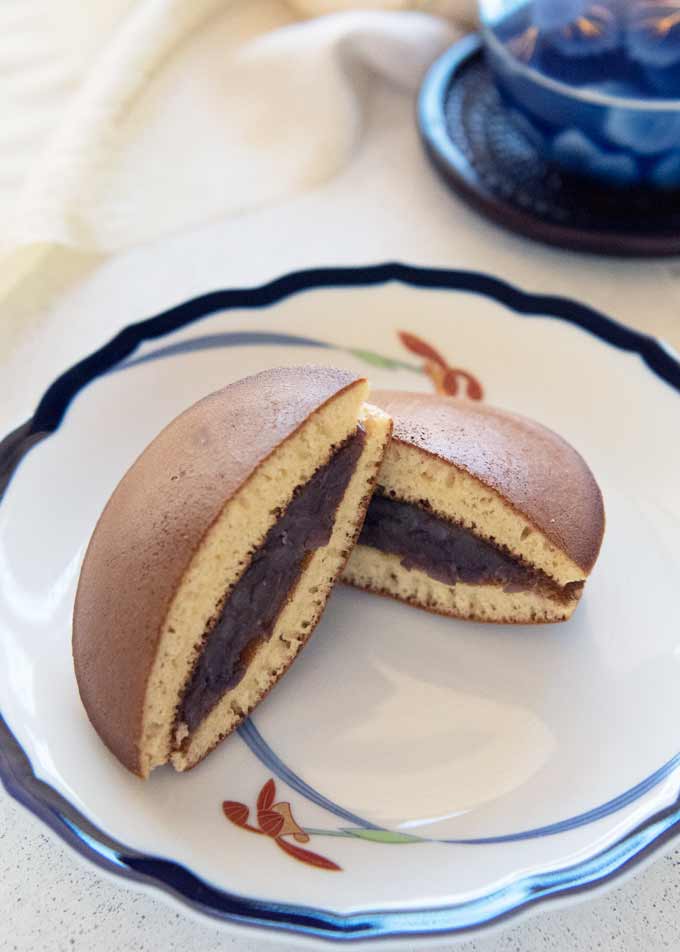
Dorayaki has a very distinct appearance – round pancakes are dark brown, as if they are burnt. But the surface is so smooth that it reminds me of perfection. This round brown surface resembles a gong, which is ‘dora’ (銅鑼) in Japanese. That’s where the name of this confection, Dorayaki, came from – ‘dora’ + ‘yaki’ which means cooked in this context.
This is the first Japanese confection using Sweet Red Bean Paste (Anko) that I have posted about a month ago. Making pancakes with a perfect brown and smooth surface requires some technique, but other than that, it is quite simple to make.
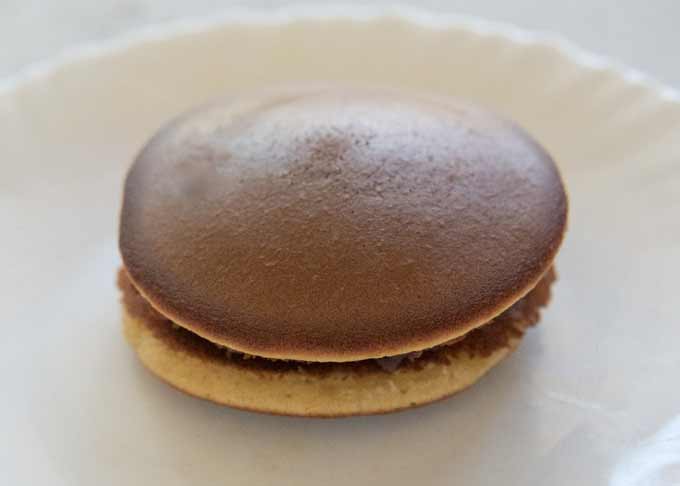
What’s in my Dorayaki (Sweet Red Bean Pancake)
For the Pancakes, you will need:
- Egg
- Caster sugar (superfine sugar)
- Honey
- Mirin
- Baking soda and water to dilute in
- Flour
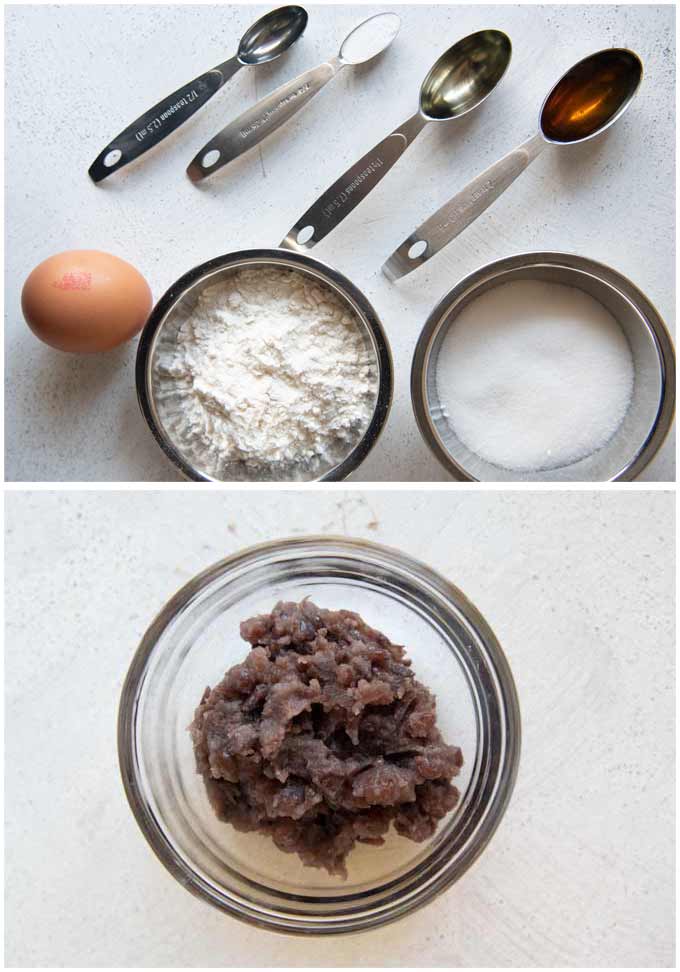
The pancake batter made with 1 egg makes 4 round pancakes.
The filling (bottom photo above) for the pancakes is Sweet Red Bean Paste (Anko). You only need about 30g of anko for each Dorayaki.
How to make Dorayaki (Sweet Red Bean Pancake)
- Make batter by mixing egg with sugar, honey, mirin, then flour and baking soda.
- Rest the batter in the fridge for 30 minutes. This will weaken the gluten formation which makes the pancake fluffier.
- Heat a non-stick frying pan to 180°C / 356°F, oil and wipe it off.
- Drop the batter onto a frying pan to form an 8cm / 3⅛” circle and cook until many bubbles come up.
- Flip the pancake and cook for 15 seconds.
- Transfer the pancake to a plate and cover with a wet towel/kitchen paper to prevent the pancakes from drying out.
- Spread anko on a pancake and make a sandwich with another pancake.
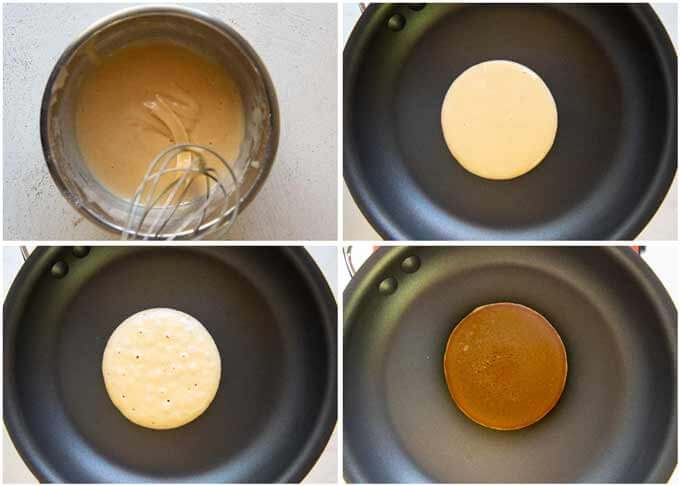
I find that maintaining the right temperature of the frying pan is quite challenging. If you have an electric frying pan with the temperature setting, it will be easier to control.
I used an infrared thermometer to check the temperature and had to use the 2nd largest gas burner set to medium low.
Wiping the oil off the frying pan is the key to the perfectly browned surface of the pancake. If you don’t do it, you will get a patchy brown surface instead of an even brown colour.
When flipping the pancake, use a very thin spatula so that it can slide underneath the delicate pancake. If the spatula is too thick, it may push the surface of the cooked side, causing it to crease.
The side that is cooked first is prettier and becomes the outside of the sandwich (the right pancake in the top left photo below).
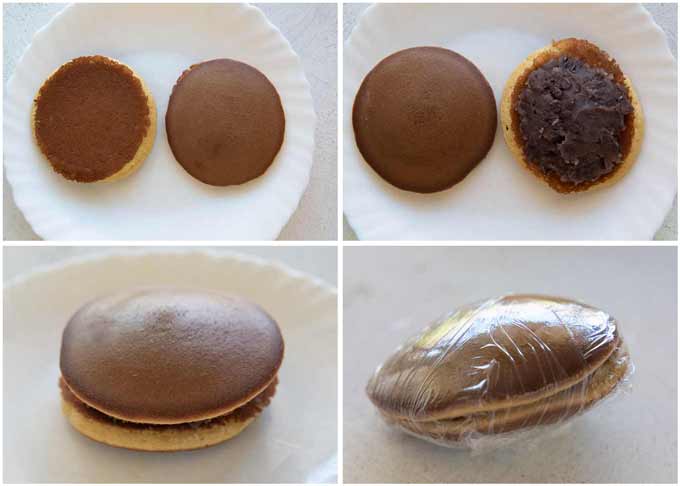
Anko used for Dorayaki
In my post Sweet Red Bean Paste (Anko), I talked about two kinds of anko – the smooth paste (koshi-an) and the paste with whole beans in it (tsubu-an). Different sweets use either koshi-an or tsubu-an, and in some cases both types of anko.
But in the case of Dorayaki, you always use tsubu-an. I have never seen Dorayaki with smooth anko (kosho-an) inside.
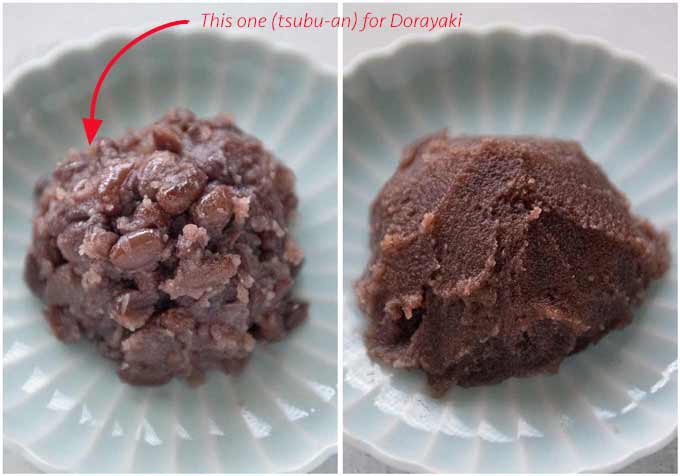
One theory is that Dorayaki is an inexpensive confection consumed by common people. Therefore, it uses tsubu-an, which takes less effort to make (in other words, less cost). More delicate and expensive confections tend to use smooth paste.
Since Dorayaki pancakes are plain and smooth, I think tsubu-an also gives a different texture to the Dorayaki.
Dorayaki is usually sold wrapped in a cellophane sheet so that you can see the smooth surface of the pancakes. The cellophane sheet also protects the delicate surface of the pancakes.
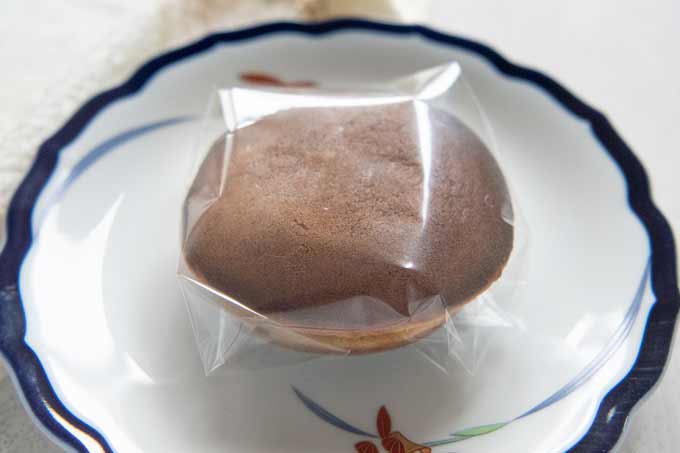
If you wrap your Dorayaki like the above photo, it will look just like those you find at Japanese sweets shops! Perhaps because of the pancakes, Dorayaki goes well with not only green tea but also coffee and tea.
Yumiko![]()
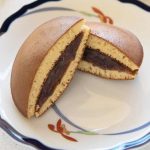
One of the most famous Japanese sweets, Dorayaki (Sweet Red Bean Pancake) is made of two pancakes sandwiched together with Sweet Red Bean Paste. Dorayaki is a sweet that has been loved by all generations for its exquisite combination of Western-style pancakes and the Japanese sweet bean paste.
Cook Time assumes you cook one pancake at a time. Total Time does not include the time required to make tsubu-an.
-
Beat egg in a bowl, add sugar and mix well. Do not whip hard as too many bubbles cause slow cooking of the batter.
-
Add honey and mirin to the bowl and mix well.
-
Add baking soda in ½ tsp water, add to the batter and mix.
-
Add sifted flour to the batter and quickly mix until lump free.
-
Cover the bowl with cling wrap and rest it in the fridge for 30 minutes.
-
Check the thickness of the batter by scooping it with the beater. If you see the trace of the batter dropped on the surface before the surface of the batter becomes smooth, it is the right consistency. Add some water if too thick, some flour if too loose.
-
Heat a non-stick frying pan or a hot plate to 180°C / 356°F. Add oil and wipe it off. (note 2)
-
Drop batter gently into the pan and make a circle with 8cm / 3⅛" in diameter.
-
Cook until bubbles start forming (see the photo in the post, note 3). Turn it over and cook for 15 seconds. Prolonged cooking makes the pancake hard and dry.
-
Transfer to a plate, covering with a wet towel or kitchen paper to stop the pancakes from drying out.
-
Place a pancake with the wrong side up (the side that was cooked after flipping) on a plate with a smooth surface (note 4).
-
Spread half of the tsubu-an over leaving a small margin around the edge of the pancake.
-
Place another pancake, right side up on the bean paste to make a sandwich.
-
Wrap the Dorayaki with cling wrap to secure the shape while gently pressing the round edge of the pancakes together to close the gap.
-
Unwrap the cling wrap and serve.
1. Please see my recipe, Sweet Red Bean Paste (Anko) for how to make tsubu-an at home.
Alternatively, you can buy a can/bag of sweetened Red Bean Paste (Coarse) from Japanese grocery store or on-line.
2. Heating the frying pan to the right temperature is a bit of challenge. I used an infrared thermometer to get the approximate temperature. I used the 2nd largest gas burner set to medium low.
Wiping off the oil is critical to making the surface of the pancake brown with no patches.
3. You will need to wait until the larger bubbles come up and almost pop or pop open.
4. The surface of the pancake, particularly the right side, is very delicate. It easily makes a dent or scratches.
5. Nutrition per Dorayaki.
serving: 81g calories: 226kcal fat: 0.2g (0%) saturated fat: 0g (0%) trans fat: 0.0g polyunsaturated fat: 0.1g monounsaturated fat: 0g cholesterol: 0mg (0%) sodium: 170mg (8%) potassium: 50mg (2%) carbohydrates: 54g (18%) dietary fibre: 1g (3%) sugar: 35g protein: 2.8g vitamin a: 0% vitamin c: 0% calcium: 0.6% iron: 6.7%
Love Dorayaki! Dorayaki always reminds me of Doraemon, brings back childhood memories. Will be trying this. Thanks!
Hi Tong, you are right, the name Doraemon came from Dorayaki. Let me know how it went.
Can you make dorayaki with smooth anko(kosho-an) .my son doesnt like the beans present in tsubu-an
Hi, you can use of course koshi-an instead of tsubu-an.